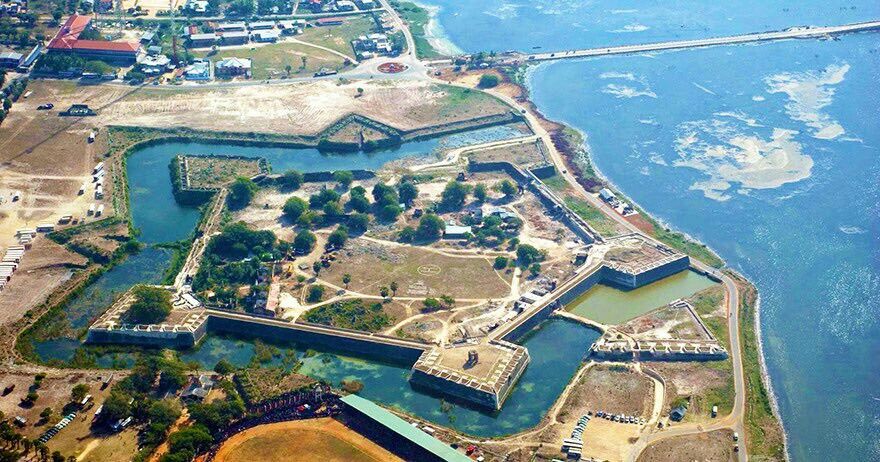Jaffna Fort, located in the heart of Jaffna city in northern Sri Lanka, is a historical monument that speaks volumes about the region’s colonial past and strategic importance. Built by the Portuguese in 1618 and later expanded by the Dutch, this iconic fort is the second-largest in Sri Lanka, after Galle Fort. It stands as a reminder of the complex history and cultural heritage that has shaped the northern region of the island.
The Fort’s Rich History
The construction of Jaffna Fort began under Portuguese rule, but after they were defeated by the Dutch in 1658, the fort underwent significant modifications, making it one of the most well-fortified structures in the region. The Dutch expanded it into a pentagon-shaped fortress, surrounded by thick walls and a wide moat, making it almost impenetrable. The British later took control of the fort in 1795, during their colonization of Sri Lanka.
Throughout its history, Jaffna Fort served not only as a military base but also as an administrative center and a place of governance. Its strategic location made it a key stronghold during Sri Lanka’s colonial era, and its influence on Jaffna’s development is evident to this day.
Exploring Jaffna Fort Today
Jaffna Fort, although damaged during the Sri Lankan civil war, has undergone several restoration efforts to preserve its historical significance. Today, visitors can walk through the ruins and explore its many features, including:
- The Main Gate and Ramparts: The impressive entrance, flanked by massive walls, leads to the interior of the fort. The ramparts offer stunning views of the Jaffna Lagoon and the surrounding city.
- Dutch Church Ruins: Inside the fort, visitors can explore the remains of a 17th-century Dutch church, a structure that highlights the influence of Dutch architecture in the region.
- Moat and Bastions: The fort’s surrounding moat and bastions are a testament to its military design. The bastions provided vantage points for soldiers to defend the fort, while the moat acted as a defensive barrier against invaders.
- Historical Monuments: Various monuments and plaques commemorate the fort’s history and its role during different colonial periods.
A Cultural and Historical Landmark
Beyond its military significance, Jaffna Fort is also a cultural landmark, reflecting the blend of European and Sri Lankan influences that shaped the northern region. The fort’s architecture, combining European styles with local materials, highlights the unique cultural fusion that occurred during the colonial era.
How to Get to Jaffna Fort
Jaffna Fort is easily accessible from Jaffna town and is one of the most popular tourist attractions in the northern province. Visitors traveling from Colombo or other parts of the country can reach Jaffna by road, train, or domestic flights:
- By Train: The train ride from Colombo to Jaffna offers a scenic journey through the northern plains.
- By Road: The drive from Colombo to Jaffna takes around 7-8 hours via the A9 Highway.
- By Air: Domestic flights from Colombo to Jaffna are available, making it a convenient option for travelers short on time.
Best Time to Visit
The best time to visit Jaffna Fort is during the dry season, from May to September, when the weather is pleasant for sightseeing. The fort is open year-round, and visitors can explore it at their own pace.
Jaffna Fort stands as a silent witness to Sri Lanka’s turbulent colonial history and the resilience of the northern region. Whether you’re a history enthusiast or simply curious about Sri Lanka’s heritage, Jaffna Fort offers a fascinating glimpse into the past. As efforts continue to restore and preserve this iconic landmark, visiting Jaffna Fort provides not only a chance to explore an ancient military structure but also to appreciate the cultural richness of Jaffna and its people.

